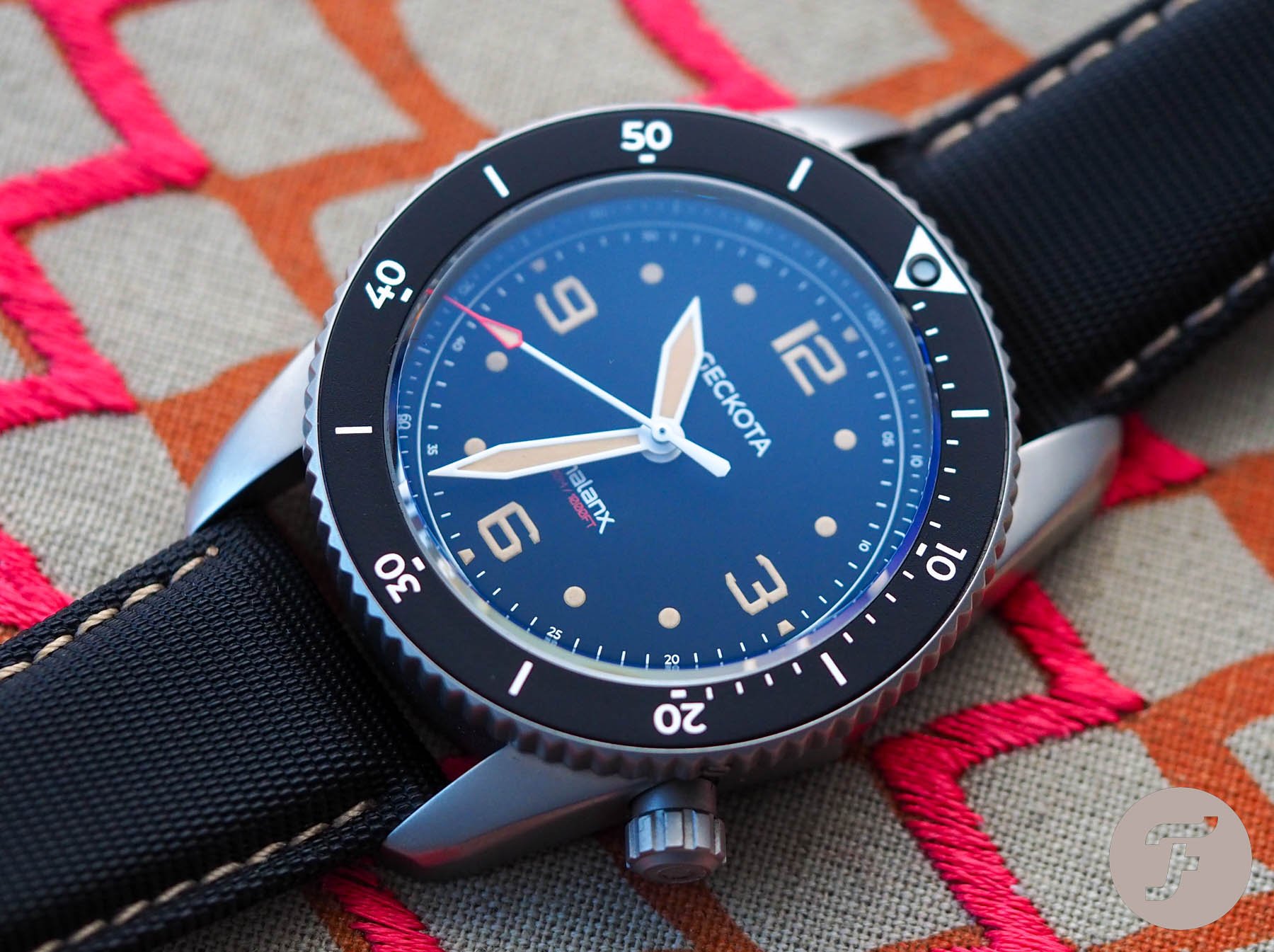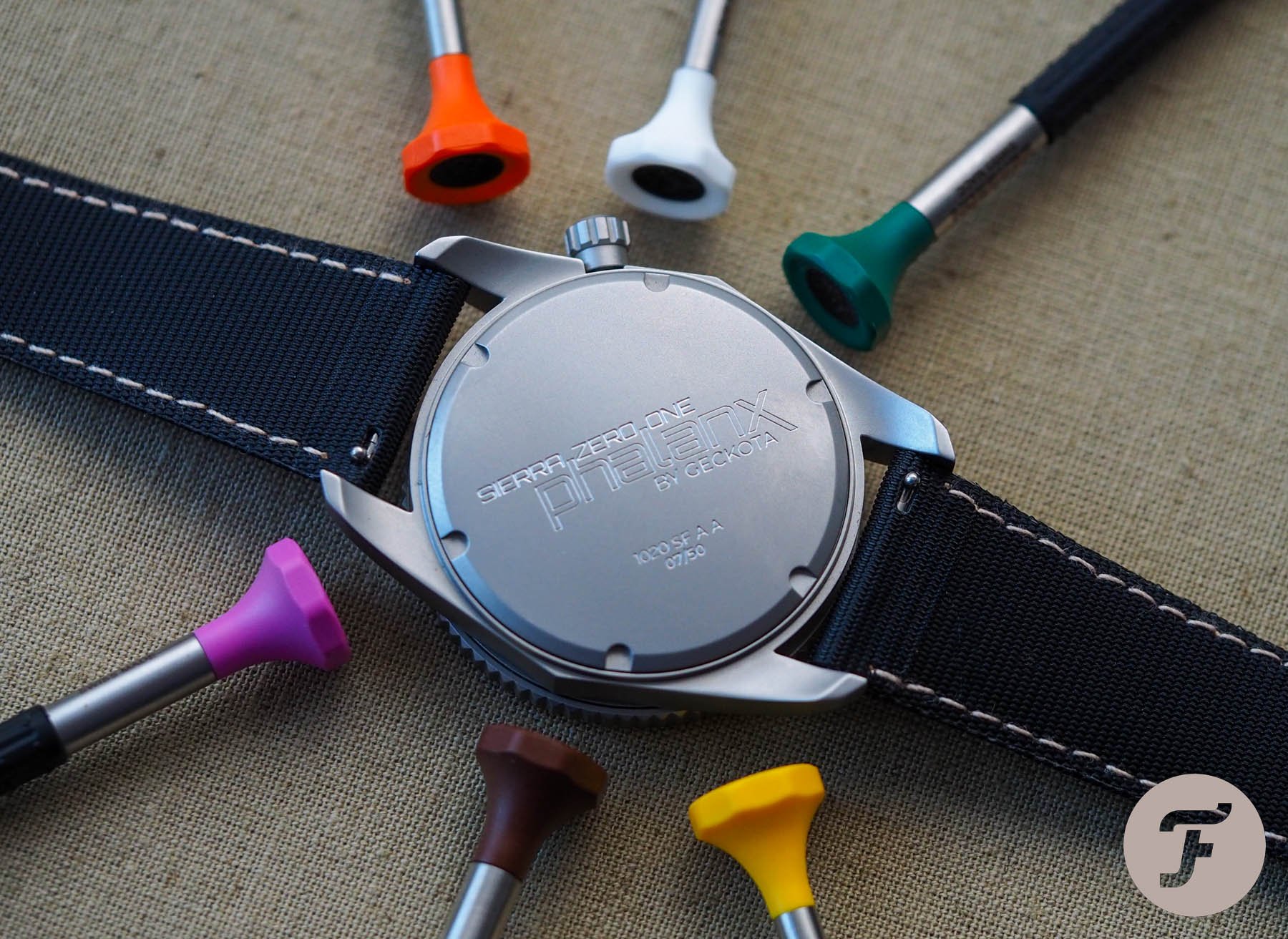Hands-On With The Geckota S-01 Phalanx ETA 2824 Military Watch
I’ve been aware of Geckota for years. To be frank, if you fancy yourself a watch lover and you’ve not heard of this active strap-merchant then you might be doing something wrong. However, I’d happily give you a pass if you’d missed on the brand’s watches as they often feel like a bit of a sideline to the main event. I’ve had a few Geckotas in my hands over the years and I’ve always been pretty satisfied with the build quality>price ratio. However, at around €775 (depending on the exchange rate), the Geckota S-01 Phalanx Military watch is quite a different proposition from the brand’s usual wares. So how does it fare?
Truthfully, the more I look at the Geckota catalog, the more I think that every new brand has a sweet spot. And I don’t just mean an area in which the brand has the most success; I mean an area to which brands must stick for all they’re worth if their products are to make any kind of sense to their emerging customer bases. Sure, if you’re Omega, perhaps you can get away with taking the odd Haute Horlogerie flyer because, well, you’ve earned that right. But if you’re a relatively new kid on the block, I think that consistent pricing is just as important as your logo, your name, your brand colors, and even the products you offer themselves.
The sweet spot
For my money, the Geckota S-01 Phalanx Military Watch exists outside of Geckota’s sweet spot (which I personally place between €200 and €500, with a huge amount of rock-solid successes coming between €200 and €300). At roughly €775 this piece instantly enters to €1,000 conversation. It isn’t sufficiently cheaper than true, entry-level luxury pieces to escape that terrifying tractor beam. And once a watch gets pick-up by that lacerating lasso it better be ready for a fight. So the question is, is the Phalanx as able to defend itself as its name suggests?
Another solid entry
In all honesty, this is a solidly built watch. It has a decent enough specs list that could easily pique the interest of a military watch buff. At 42.5mm wide, with a media-blasted stainless steel case housing an ETA 2824, it has all the required robustness and reliability you might desire outside and in, but, to me, it all comes off as a bit half-baked.
The anti-reflective sapphire crystal is flat. It is surrounded by an equally flat unidirectional rotating bezel topped with a flat black insert. At 12 o’clock, a pale green lume pip sits at odds with the faux-radium lume of the dial and hands. Perhaps it was deliberate; perhaps an afterthought. Whatever the intention, the result sits ill at ease with me. I’m a huge fan of faux-radium as a color. I would have welcomed its use on the bezel pip also in only to further warm a visage that feels positively frostbitten.
A functional performer
Functionally, this watch is a sufficient performer. The bezel action is decent. The crown machining is actually very good. While the protrusion of the 4 o’clock winding button will annoy some people, its sympathetic placement just about allows for it. The truth is, this crown doesn’t actually stick out significantly further than many other 4 o’clock crowns, but its narrower diameter has the effect of making it look spindly and lanky. It does, however, perform admirably.
…polished hands can be a Godsend.
When this watch falters slightly, in my opinion, is in low light. I know white hands are a classic field watch trope but I hate them. I feel they instantly make a watch display look cheaper than it is. Additionally, they do not help much in dusky conditions where properly polished hands can be a Godsend. In fact, the polished hands of my Broad Arrow Speedmaster aid legibility before the lume is forced to kick in. Here, that would have been a treat.
Why?
The lume is somewhat uninspiring. It certainly isn’t the worst lume I’ve encountered (even at this price point), but it is grainy and unsatisfying. When compared to the hands, the dial lume is much, much duller. That’s hardly uncommon, but it is a pet peeve of mine. When a small brand is trying to bust into the Hamilton/Tissot/Longines/Certina realm, it really needs to bring the heat. A good place to start is something as obviously comparable as lume. Not everyone can tell the difference between good and bad CNC work; most everyone can run a watch’s luminous elements through the eye test and come up with an opinion.
With a retail price of nearly €800, there simply has to be enough wiggle room for excellent lume.
I’ve said this a thousand times before, but it is worth saying again. It is always worth doing the simple things well. There are a great many things no watch brand can account for — personal taste being one of them. But there are many, many things within any brand’s control. This is one of them. With a retail price of nearly €800, there simply has to be enough wiggle room for excellent lume. If there isn’t, something’s gone wrong in the costing department. Take a look at Lüm-Tec for example. There’s a real-world example within the same price bracket of a brand that knows how to glow.
What is good about the Phalanx?
The watch feels very substantial. Honestly, while it clearly doesn’t resonate with me, I think I get a sense of what Geckota is aiming for with this piece. I would go as far as to say many people will like this incredibly neutral design. It is undoubtedly highly legible, inoffensive, and relatively comfortable on the wrist (thanks in part to the very nicely made sailcloth strap).
There is a video on the Geckota website (I’ve included it above so you can enjoy it too), which shows a man wearing this watch while apparently bird-watching (if the distant twittering/binoculars are to be believed). I actually think this is a pretty solid representation of the target demographic. Large numerals, a rugged, outdoorsy design, an unpretentious, completely sober take on a dive/field/pilot hybrid that would happily call the wrist of a middle-aged twitcher home.
It looks better in the wild
On the wrist of the video’s model, it looks positively comfortable. It makes sense against similarly no-nonsense gear. And, as such, as much as it is not to my personal taste I have to say it has achieved its design remit. What annoys me slightly, however, is how much better I feel it could have been, if we’d seen an ounce or two of Gekota’s usual flair thrown into the mix.
In the €200–300 range, Geckota makes some truly exceptional meca-quartz chronographs and Asian-automatic-powered watches. The catalog includes exciting dial colors and layouts, excellent throwback references, a ton of neo-vintage classics (seriously, you need to check these out), and even some surprising complications (I’m talking about the ca. €220 jump-hour Seagull TY2709 Automatic here). Here everything is certainly “better” on paper (a more advanced case and a better, Swiss automatic movement), but it loses some of the “zip” I have previously associated with the brand.
Geckota is attempting to spread its wings with more ambitiously constructed (and priced) models.
And so to summarize, while this isn’t my favorite model from the brand as I find it too flat and safe for my preference at this price point, it is clearly the product of a design team that is becoming ever more confident in the direction they wish to push the brand. After years of experience in the lower-end segment, Geckota is attempting to spread its wings with more ambitiously constructed (and priced) models.
The Rob treatment
You all know by now that I can not abide criticism without sharing some thoughts on what I would do differently. It isn’t that I believe myself to be the arbiter of good design, but given that I’m critiquing this model from a personal position, it is unfair on the Phalanx and Geckota to not offer tangible alternatives to the design decisions made that don’t sit as well with me as I’d like. Once again, this is just a personal take on a model I’m sure will have its followers, but it is shallow and unproductive to only offer detraction when constructiveness is so readily available.
I feel that Geckota has a chance to succeed at this price point if the quality proposition is made a little more apparent…
As this range develops I would like to see the following things from the Phalanx: I would much prefer polished hands with a skeletonized portion of the minute hand so the hour hand can be easily seen and read as it passes beneath it. I’d like a little more life in the crystal and bezel as I feel they don’t enhance each other’s presence. In fact, on the contrary, I think they bring out the worst in each other, accentuating the flatness of both.
Instead, a domed bezel insert (perhaps similar to the all-steel wonder we saw on yesterday’s Visitor Duneshore Shallows dive watch — a watch that is a direct price-point competitor and perhaps the exact opposite in terms of “risks taken”) might be a nice addition. Pair that with a slightly domed crystal and the result would be a shapely beast that would instantly have more wear-appeal in my book.
Final thoughts
Give me slightly shorter lugs and a wider crown perhaps moved to 3:30 and further recessed. The colorway (bar the green lume pip, which I’d like to see in matching faux-rad) can stay. So too can the awesome decimal track around the edge of the dial. I feel that Geckota has a chance to succeed at this price point if the quality proposition is made a little more apparent. However, I would definitely prefer this model (with a few of the changes suggested) repackaged with an Asian automatic movement and sold for under €500. That, to me, would mark the Phalanx family as one for success.
With just 50 pieces of this model being made, I can see this being an informative experiment. The brand will surely learn from this model and pivot accordingly. Will it sell? I have no doubt. Will it sell quickly? I am sure it will sell quickly enough given Geckota’s loyal following. The really exciting thing for me, however, is what comes next. Learn more about the Geckota S-01 Phalanx here.










